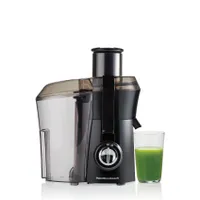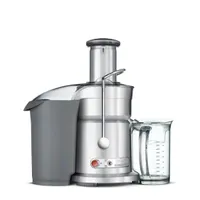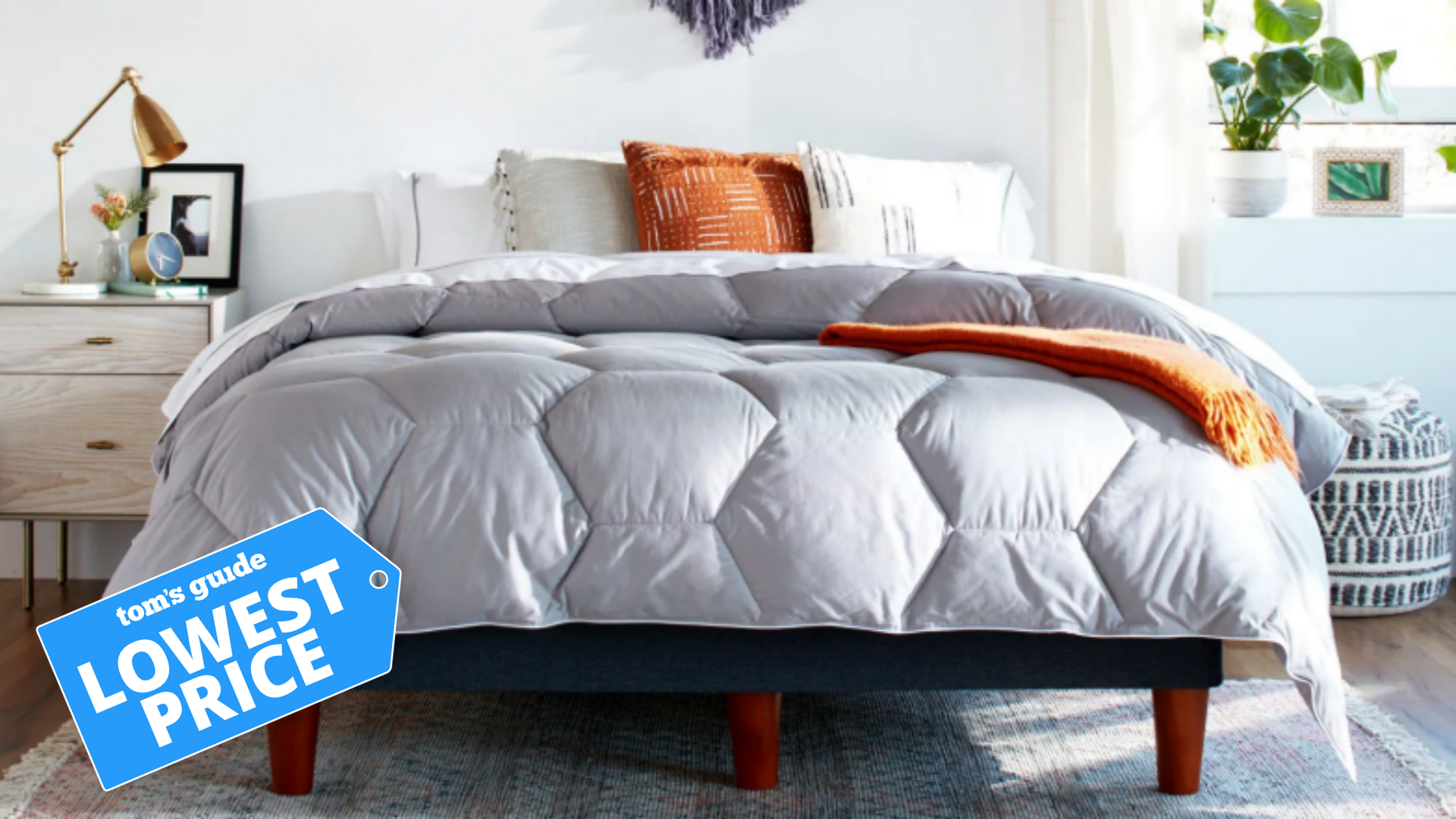Best juicers 2025
Find the best juicer for your home and lifestyle with our reviews

The best juicers are a surefire way to boost your vegetable and fruit intake. Extracting vitamin-dense, fibrous drinks from a range of fruits, vegatables, and leafy greens, these appliances make delicious juices, smoothies and vitamin shots.
But it's not just juice. Despite the name, these can be versatile machines which can make nut milk, sorbet, and even tofu.
We've tested dozens of market-leading juicers, whittling them down to a handful of the very for every user, on any budget. When reviewing all of these juicers we looked for the yield per gram of produce we tested, and also considered how easy they were to clean and how successfully they tackle a range of ingredients. Here are our top picks.
Types of juicers
Before I get into the details, it's worth knowing the difference between the two main types of juicer you'll see in this guide.
Centrifugal juicers are faster, cheaper, and noisier. As the name suggests, they use a high-powered motor to extract juice from shredded fruit and vegetables using centrifugal force. They essentially spin the juice out of fruit at high speed. However, this results a lower fiber content, as they blitz up ingredients before extracting. The worst examples of this type of juicer make something closer to a smoothie than to true juice.
Masticating / slow / cold-press juicers are typically a lot more expensive, but they're quiet and effective. Again, as the name suggests, they break down your ingredients much like a chewing motion would. This makes for a higher yield and better-tasting juice than than a centrifugal juicer. It also preserves fiber, so this type of juicer tends to be better for your gut. This makes them a popular choice for those who want a juicer for health-related reasons.
The quick list
Here’s the best juicers you can buy right now based on our testing and reviews.
The first three products featured are slow juicers, and the rest are centrifugal. There's a budget and premium option for each type.
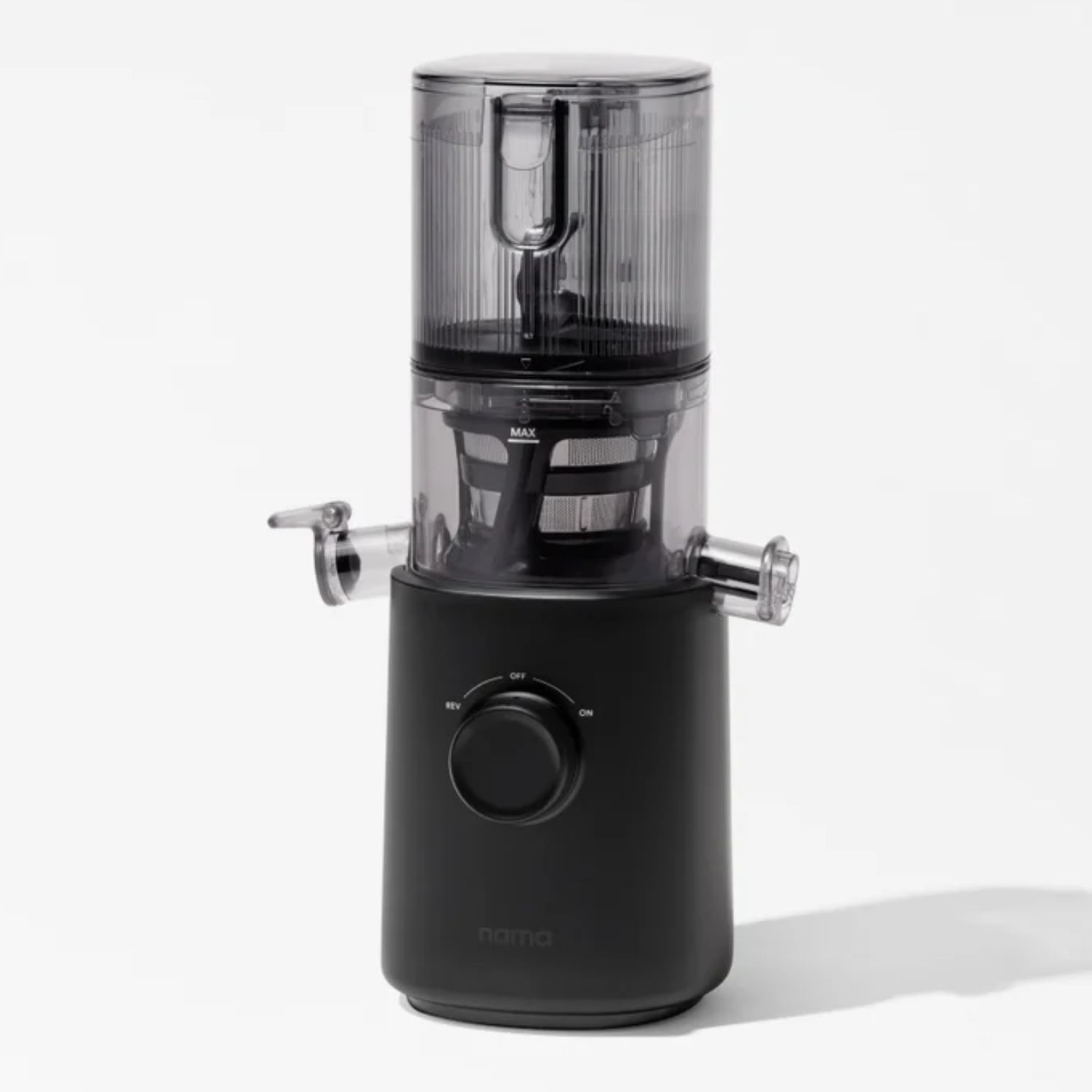
The Nama J3 is the best juicer for most people. It makes exceptional juice and unlike most high-end juicers, it's simple to use. A smaller and more portable version of Nama's iconic J2, the J3 slots neatly into smaller kitchens and is easy to clean.
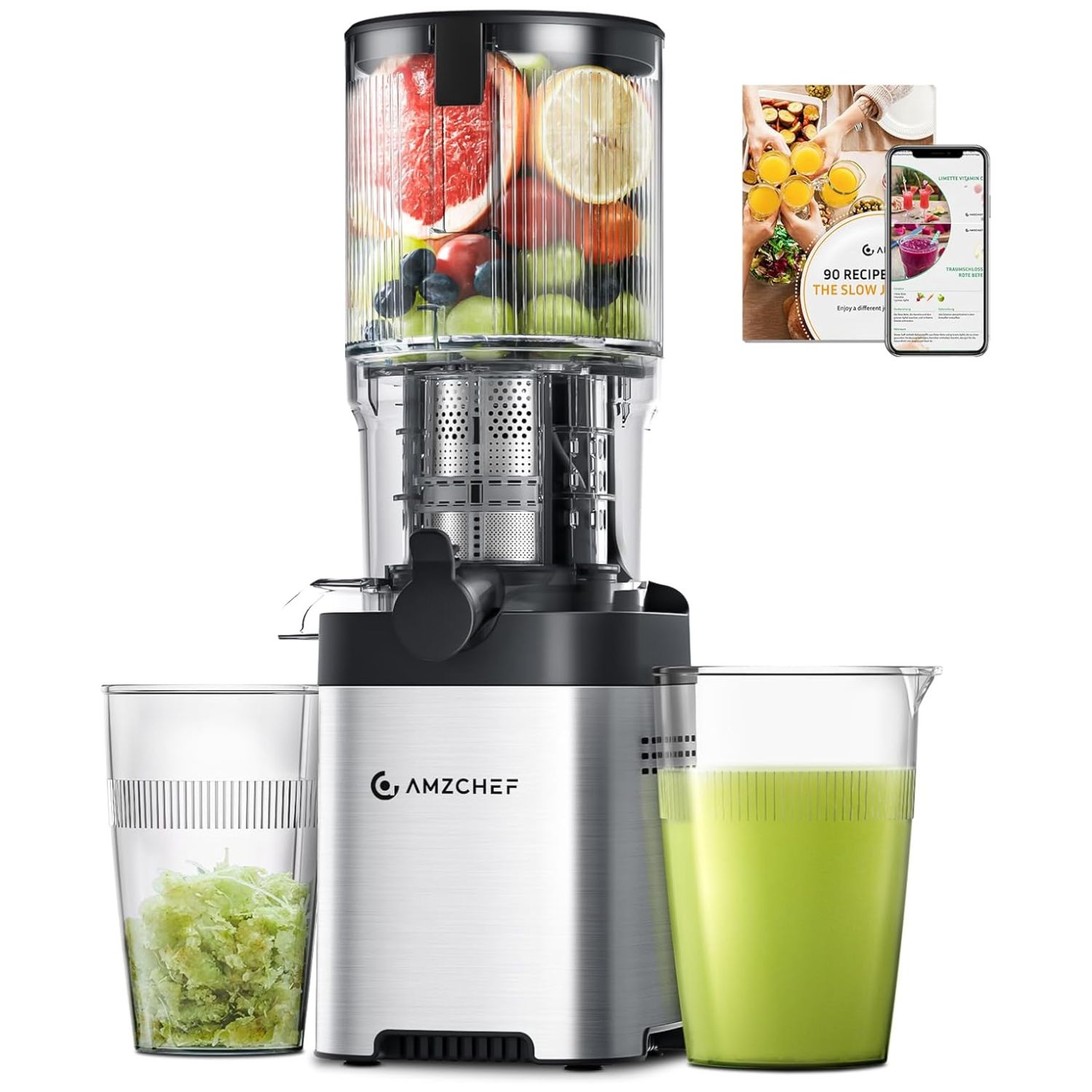
Looking for a budget-friendly slow juicer? The AMZCHEF Cold Press Juicer is our top recommendation. It really impressed us with its sheer value for money, and it also takes up a modest amount of space in the kitchen.

This Nutribullet juicer is ideal for plug-in-and-go juicing. Its wide feeding chute can fit a whole apple with no prep needing, and it can produce an entire jug of juice in around one minute. Cleaning is straightforward, and its simple controls are ideal for beginners.
The best juicers you can buy today
Why you can trust Tom's Guide
Best juicer overall
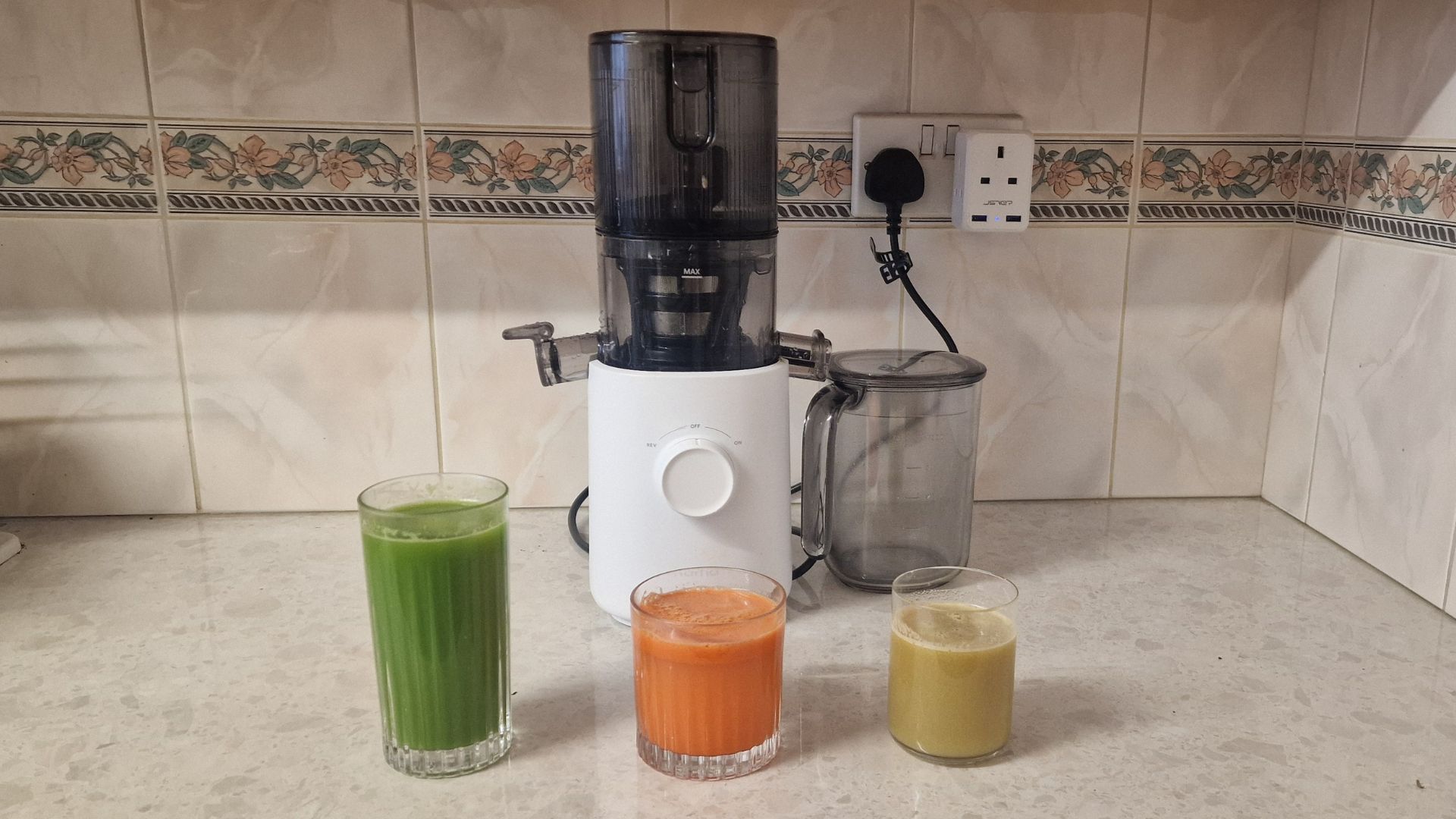

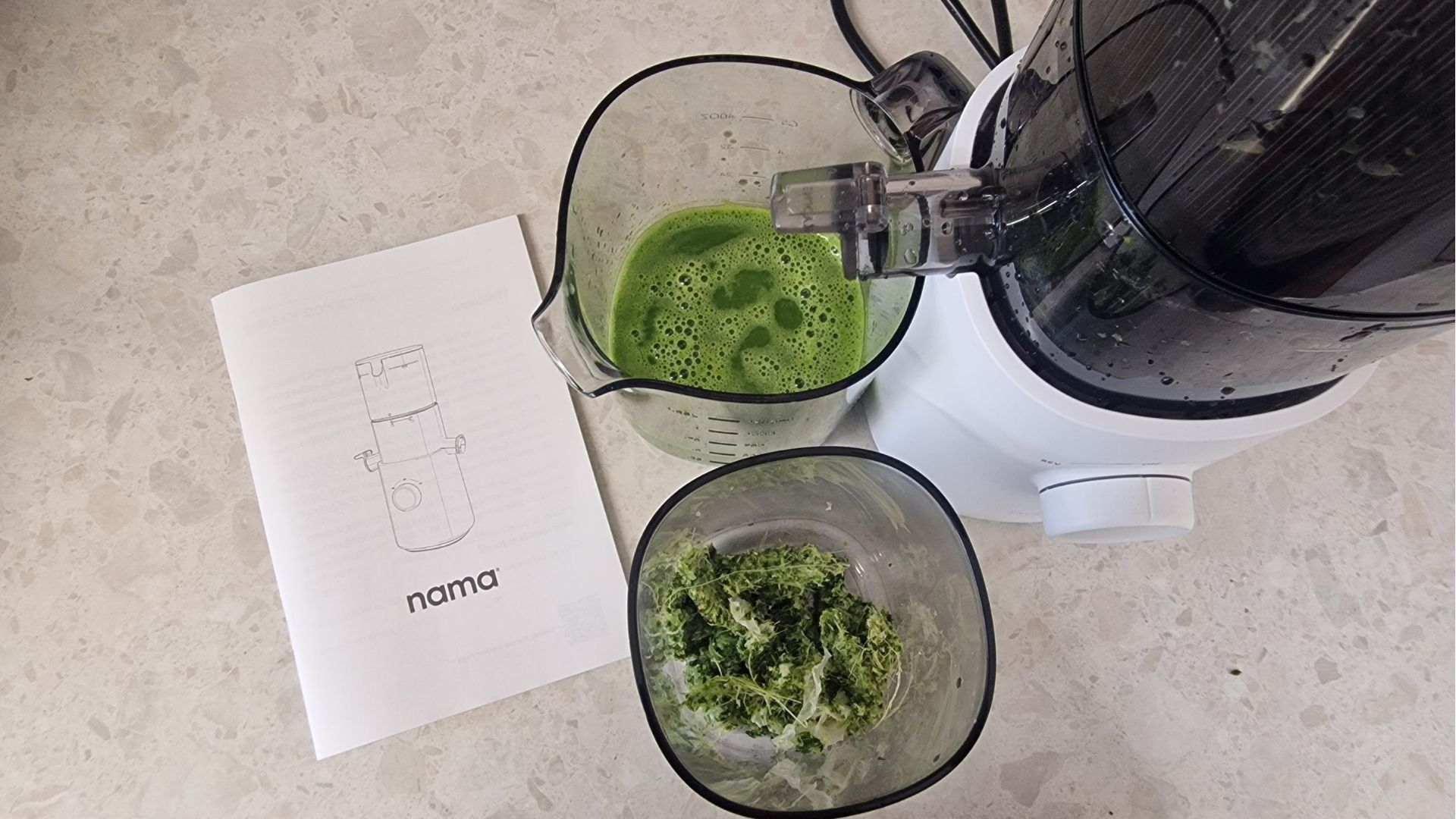
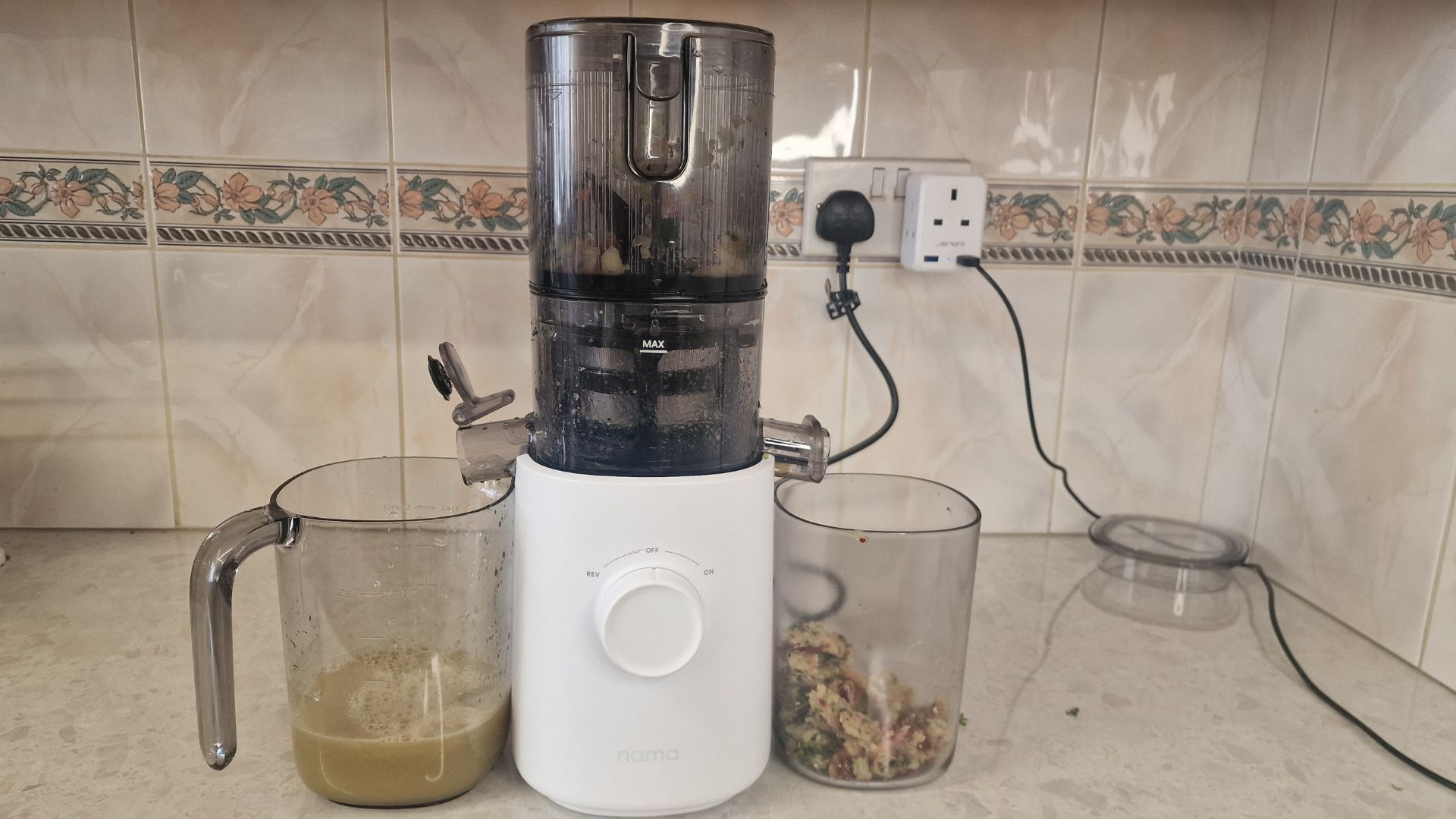
Specifications
Reasons to buy
Reasons to avoid
It's an expensive option, but the Nama J3 Cold Press Juicer is the best juicer we have tested. The J3 is a smaller and more portable alternative to Nama's much-loved J2 juicer, which allows you to add all of your ingredients in one go for hands-free slow juicing.
In our tests, there was nothing this juicer could not handle. It made light work of carrot and ginger, and produced some of the creamiest nut milk we've tried.
Cleaning is also a breeze with this juicer, with its fully removable parts that can be rinsed after each use, and very few grooves for fiber to latch onto. You can choose from two filter sizes depending on your desired level of fiber, and the Nama recipe book provides an extensive list of recipes, which we enjoyed sampling when testing.
It's also backed by an impressive 15 year warranty, which shows how confident Nama is in its premium construction.
Read our full Nama J3 Cold Press Juicer review.
Best budget juicer
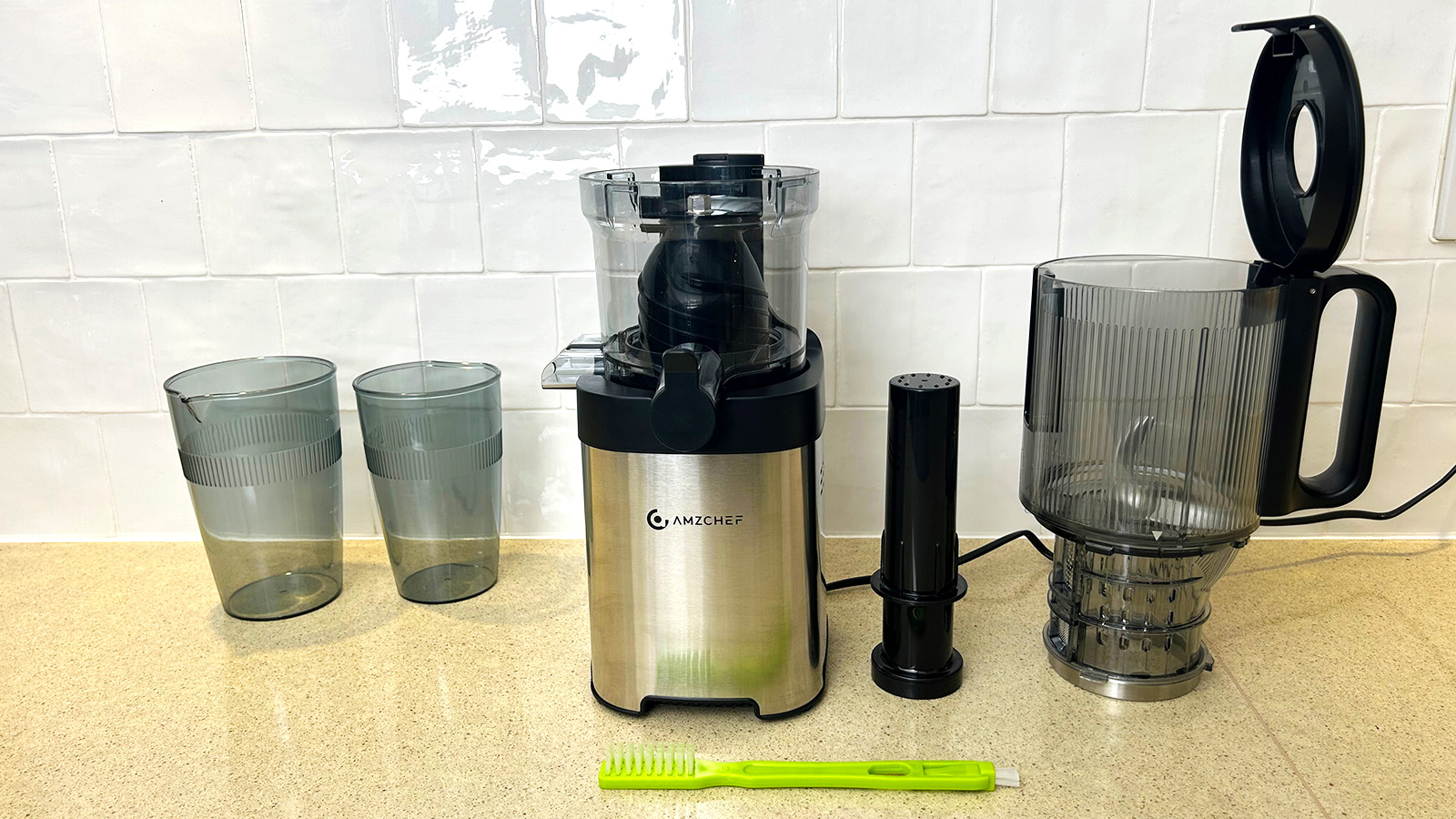
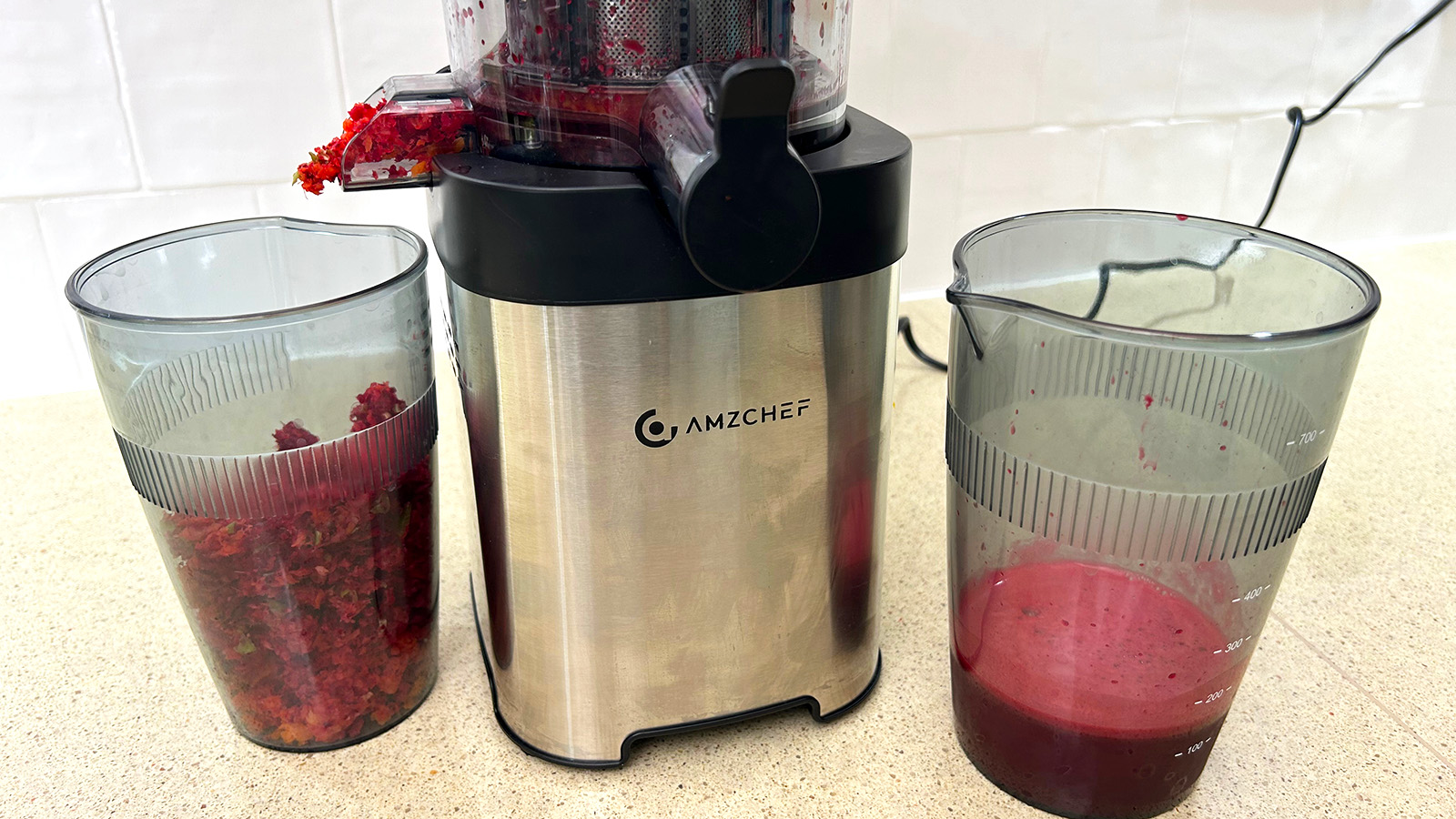
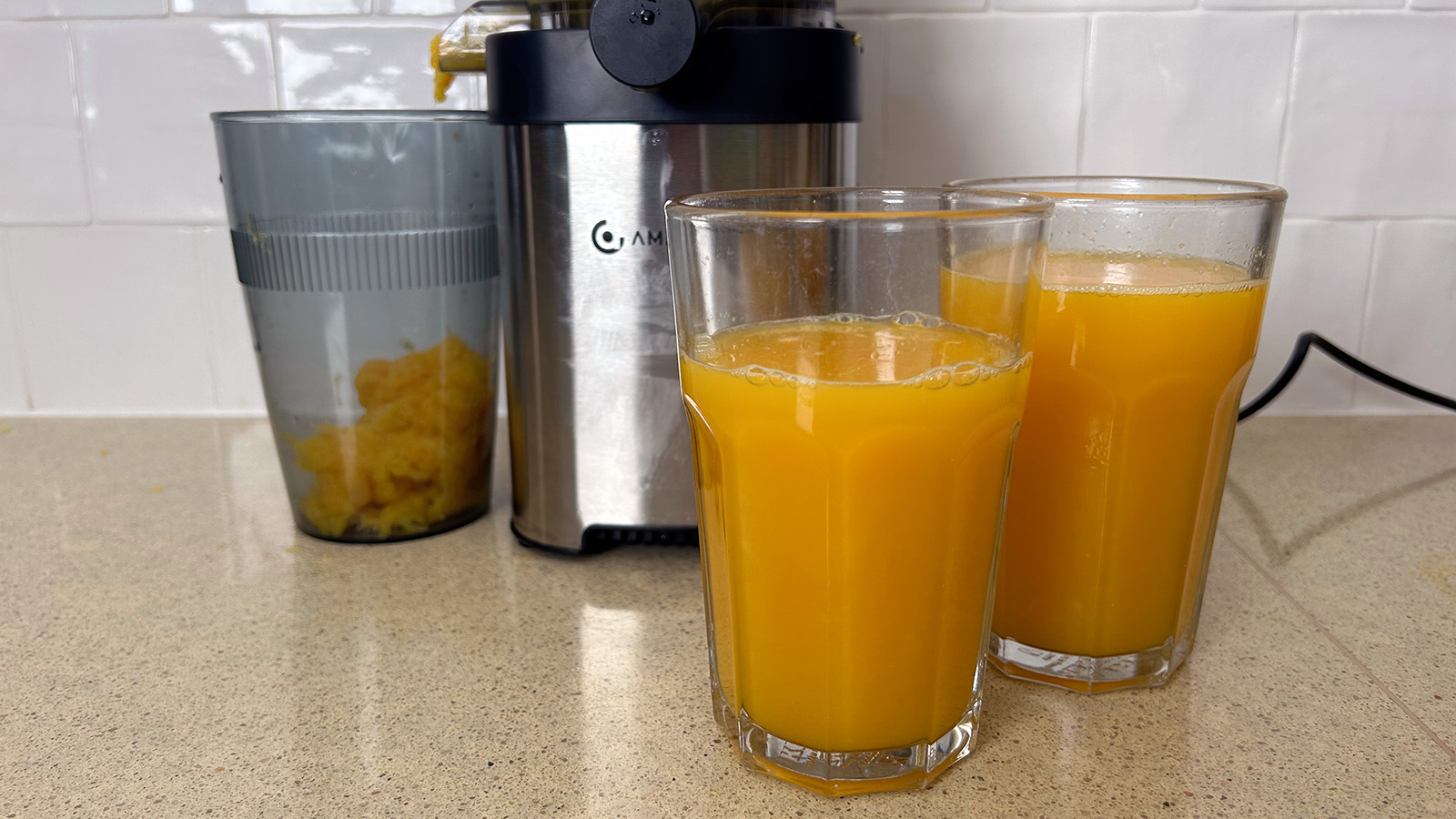

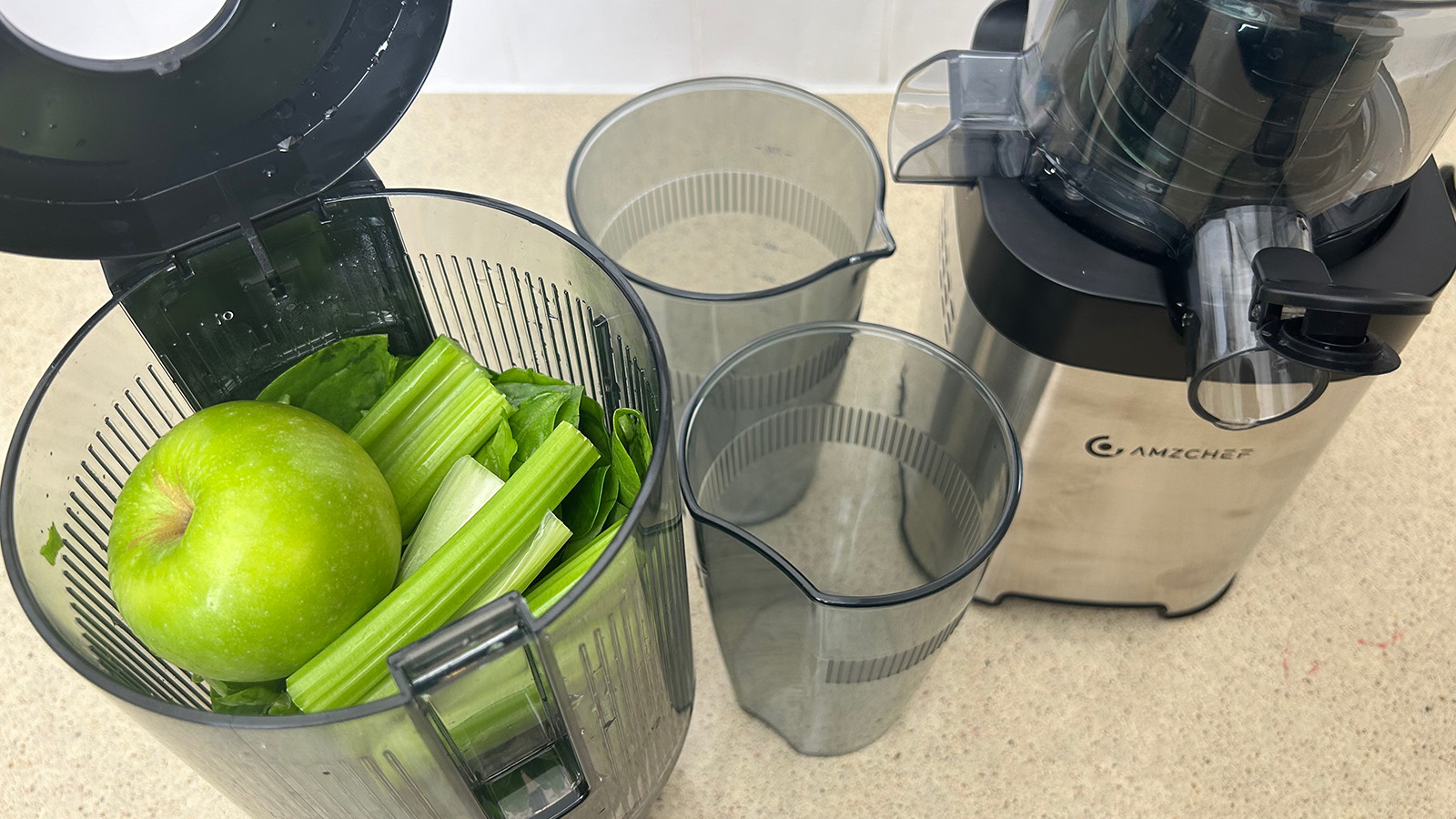

Specifications
Reasons to buy
Reasons to avoid
AMZCHEF is one of those brands you'll see on sale at Amazon and think, 'that's a good price, but I don't know if it'll perform'. Well, when we put it to the test, we were surprised to find that the AMZCHEF Cold Press Juicer ZM1902 can hold its own.
Sure, the construction is as plastic-y as you might expect from a sub-$100 slow juicer, and it's not backed by any kind of warranty, but we did manage to get some decent juice out of the AMZCHEF, and it also takes up a very small amount of counter space compared to other cold press juicers.
While it doesn't compete with the Nama in terms of performance, it did create some tasty fruit juices and wasn't perturbed by high levels of pulp. However, cleaning is fiddly as none of the parts are dishwasher-safe.
It hit 80dB in testing, which is louder than some cold press juicers but still very manageable, and we also found that assembly was straightforward due to the fact that it comes in just four parts.
Read our full AMZCHEF Cold Press Juicer ZM1902 review.
Best centrifugal juicer
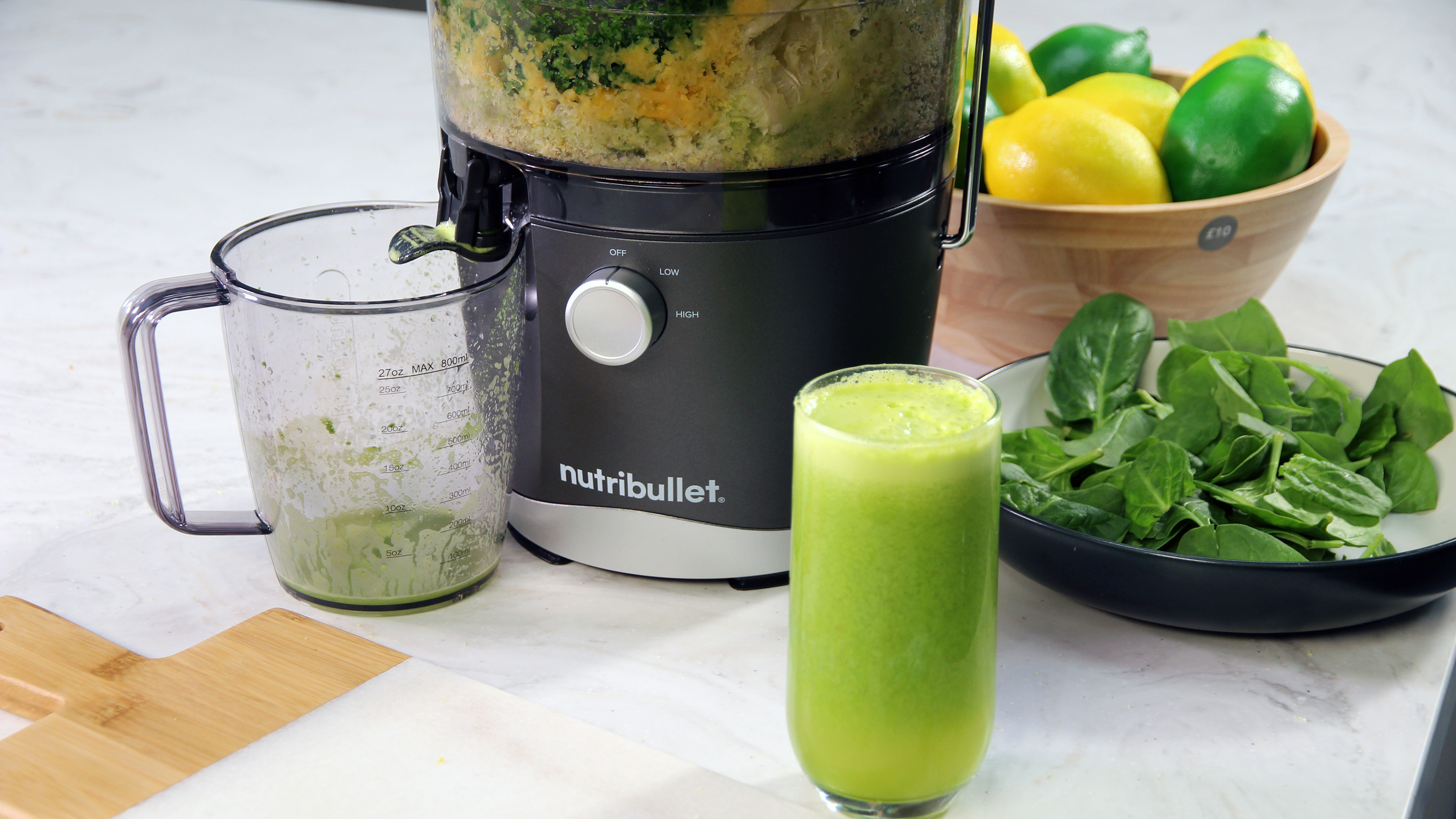
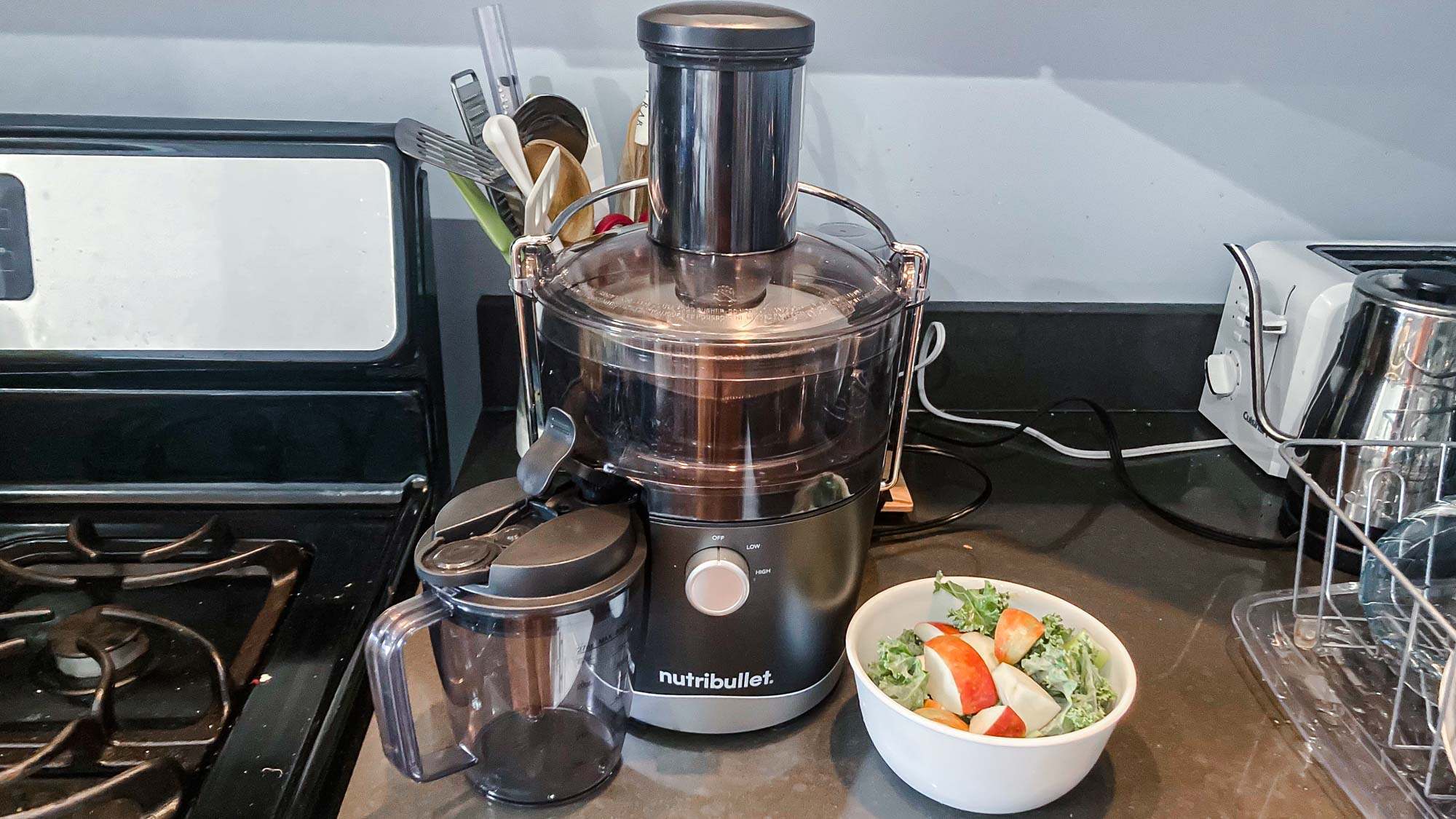
Specifications
Reasons to buy
Reasons to avoid
The Nutribullet Juicer is one of the simplest juicers of any on the market, with a built-in pulp collector and sturdy compact design. This results in a light yet stable model, which can be assembled and disassembled quickly.
The feed chute is three inches wide, accommodating a range of whole fruits and vegetables, while the juice jug comes with a practical lid. Speed and ease of use are some of the big benefits of the Nutribullet, which is priced affordably — under $100 at most retailers.
This low price does mean that you’re missing out on advanced extraction capabilities. We found that leafy greens and other tough vegetables were not efficiently juiced; the Nutribullet was much better suited to softer fruits, performing well on recipes like pineapple, mango and orange juice. For anyone who just wants to juice and go, focusing on flavor rather than nutrient extraction, this is a compelling option.
Read our full Nutribullet Juicer review.
Best citrus juicer



Specifications
Reasons to buy
Reasons to avoid
If you need fresh citrus juice, you need this powerful little juicer. The KitchenAid Go Cordless is designed for citrus fruits, and it's surprisingly effective despite its size. We could juice 25 oranges in under 15 minutes, making a huge 28oz of orange juice.
The reamer is wide, so we found it can handle large grapefruits as well as smaller citrus fruits like limes. Unlike many juicers, this is easy to clean. Almost every part can go in the dishwasher, which is a huge time saver.
The battery can also be used with other KitchenAid Go products, like the KitchenAid Cordless Top Down Chopper.
However, this juicer juices with pulp, so if you want smooth juice, you either need to strain it afterwards or opt for a different model.
The biggest drawback is that this only works with citrus juice. If you love orange juice, make fresh lemonade, or need lime juice for guacamole and margaritas, this appliance is essential. For anything else, you're out of luck.
Read our full KitchenAid Go Cordless Citrus Juicer review.
Also tested
We're constantly testing juicers at Tom's Guide, but not every juicer can be the best. However, there are a few appliances that might not make the grade in this guide but are still worth considering.
The Hurom HAA was our top performer across all our tests. It produced high yields of 63% in orange juice (the only juicer we tested to hit over 60%) and an immense 79% for apple juice and kale. On top of that, it can make ice cream, nut milks and tofu, making it a versatile addition to any kitchen. However, high performance means a high price, so we can't recommend this appliance to everyone.
Read our full Hurom HAA Slow Juicer review.
The Hamilton Beach Big Mouth Juicer is incredibly affordable, but it's very efficient. For the price, it makes huge quantities of good juice. That said, you get what you pay for. It's below average when juicing leafy greens and it's very loud.
Read our full Hamilton Beach Big Mouth Juice Extractor review.
This is the rare centrifugal juicer that can tackle tough ingredients like kale and carrots. It has a wide chute and large-volume containers, so you can efficiently make vast amounts of juice. However, it's very loud, and it doesn't produce as much juice as high-end masticating models.
Read our full Breville Juice Fountain Elite review.
How we test

I'm the Managing Editor for Homes at Tom's Guide, and I've been testing juicers and other kitchen gadgets for nearly 6 years.
Now I own one, I don't know what I'd do without my juicer. Whenever I feel a cold coming on, I immediately make a big batch of immunity shots (ginger, lemon and turmeric, thank me later) in my trusty juicer. And I also treat myself to the occasional green juice when I need a vitamin kick.
We tested each juicer in a home setting to assess how well it would work in the average consumer's kitchen. We made a range of recipes, designed to test the juicers' abilities with different types of produce. This included softer fruits like pineapple and berries, firmer and more involved ingredients such as whole apples, and leaft greens like spinach and kale.
As we made each juice, we also assessed how loud the juicers were as they worked, the stability and size of the model, and the ease of the whole experience.
Finally, we considered the clean-up process, including disassembly and reassembly, in order to get a full picture of how it would be to own and regularly use these units.
Test results
| Row 0 - Cell 0 | Orange Juice Yield (%) | Apple and Kale Juice Yield (%) | Beetroot, Blueberries and Strawberry Juice Yield (%) | Noise (dB) |
Aicok Wide Mouth Centrifugal Juicer | 40 | 64 | 61 | 88.8 |
Bella High Power Juice Extractor | 59 | 62 | 63.6 | 87.6 |
Breville The Juice Fountain Compact | 56 | 70 | 67 | 84.2 |
Breville The Juice Fountain Elite | 57 | 70 | 60 | 87 |
Cuisinart Easy Clean Slow Juicer | 56 | 58 | 65 | 73.5 |
Hamilton Beach Big Mouth Juice Extractor | 45 | 70 | 71 | 91.3 |
Hurom HAA Slow Juicer | 63 | 79.5 | 67 | 77 |
Kuvings Whole Slow Juicer EVO820 | 51 | 64 | 59 | 69.5 |
Kuvings Masticating Slow Juicer NJE-3580U | 59 | 60 | 61.5 | 73.7 |
Nutribullet Juicer | 58 | 65 | 62.5 | 89 |
Omega J8006HDS | 54 | 78.5 | 59 | 71.7 |
Oster Self-Cleaning Professional Juice Extractor | 53 | 51 | 60 | 87 |
Tribest Greenstar Elite GSE-5000 | 56 | 75 | 67 | 69.3 |
How to choose
Not every juicer is created equal. Before you check out our favorites, here are some things to bear in mind.
Centrifugal, masticating, or twin gear?
Most juicers fall into one of these three categories:
- Centrifugal juicers use a cutting disc with sharp blades to shred produce at high speeds, introducing higher levels of oxidation (10,000+ revolutions per minute). Not preferred for leafy greens. Loud. Less expensive.
- Masticating juicers (i.e., cold press) use an auger to slowly force fruit through a strainer (40 to 80 rpm). This process is much slower, but better for preserving flavor and nutrition. Produces roughly 30% higher yield than centrifugal juicers. Quieter. Expensive.
- Twin gear juicers (also considered cold press) use dual gears to push food through a strainer (60 to 120 rpm). High yield. Preserves flavor. Expensive.
For further info, check out our guide on masticating vs centrifugal juicer: which is best?
How many speeds?
The more speed settings a juicer has, the more user control it offers. Lower speeds are meant for soft greens and fruits (like spinach, oranges, plums, grapes, tomatoes); higher speeds are for hard fruits and veggies (like apples, carrots, celery).
What's the feed chute diameter?
The larger the feed chute, the less prep time you'll spend chopping groceries into smaller pieces. A chute diameter of 2 to 3 inches is common for cheaper models — but wider is always better.
What about noise pollution?
Not unlike your common blender, these machines can create quite the racket (particularly at higher speeds). But not all of them. Masticating juicers are quieter, grinding away at 60 decibels or less, which is roughly the volume of normal conversation.
How's the warranty?
Just like any other household appliance, it can be worthwhile to back up your juicer with a solid warranty. Not sure what parts are covered? A quick phone call to the manufacturer should clear everything up.
Save or splurge?
If juicing is a permanent fixture of your fitness routine, investing in a premium model might cost upward of $500. Wider feed chutes, multiple speed options and better-quality parts are all hallmarks of the more expensive machines. But if your juicing needs are casual, you can still try it out for less than $100.
Juicer FAQs
Which juicer has the least waste?
Generally speaking, masticating juicers will produce less waste versus centrifugal. This is because the juicing process is slower, but more thorough — using an auger to force the fruit through a strainer, rather than shredding it at high speed. Consequently, you will generally get a higher juice yield from a masticating design.
However, this isn’t always the case, as our test results show. While the masticating process is more efficient on the whole, performance can vary from model-to-model, and in some cases, a centrifugal design can even surpass masticating in juice yield.
For this reason, to find the juicer which offers the least amount of waste, you need to consider its performance across a range of ingredients. That’s where we can help — as part of our tests, each juicer had to produce orange juice, apple and kale juice and beetroot, blueberries and strawberries juice. So we could see how each model fared in all kinds of juicing situations and how much waste it actually produced. Check out the table above for side-by-side comparisons.
Get instant access to breaking news, the hottest reviews, great deals and helpful tips.

Millie is the Managing Editor of Homes at Tom's Guide. She's been reviewing home tech for over five years, testing everything from coffee makers to the latest vacuum cleaners.
With particular expertise in cookware and kitchen appliances, you'll struggle to find an air fryer Millie hasn't tested. She's traveled the world reporting on the latest home innovations and product launches, learning how to use pizza ovens from Pizzaiolos in Naples, and touring the De'Longhi factory in Venice. Millie is also an SCA-Certified barista.
When she's not reporting on home and appliance trends, Millie loves watching live music. She's currently learning the guitar - naturally, she plays a Fender.

